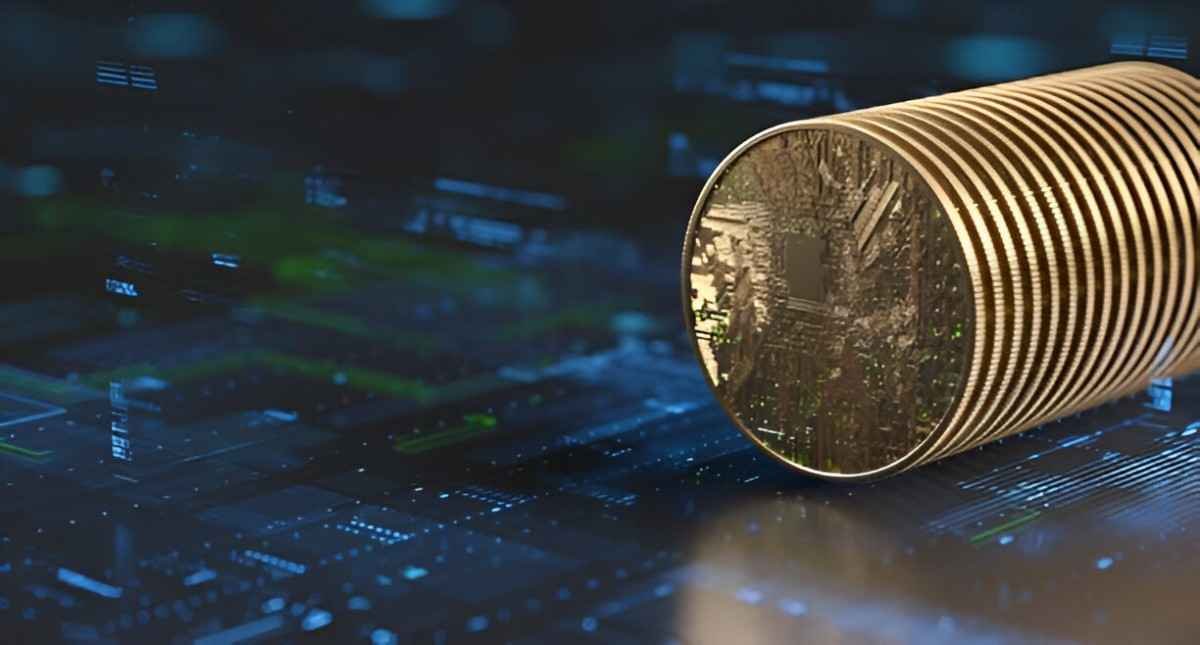In the ever-evolving world of cryptocurrencies, new digital assets continuously emerge, and each brings its unique set of opportunities and challenges. One such asset that has garnered attention in recent times is AIT cryptocurrency. As someone who has spent considerable time researching and analyzing the cryptocurrency market, I’ve come to appreciate the intricacies of AIT and its potential role in the blockchain ecosystem. In this article, I will walk you through everything you need to know about AIT, from its origins to its current value proposition, including comparisons with other cryptocurrencies and real-world examples of how it functions.
Table of Contents
What is AIT Cryptocurrency?
AIT stands for Artificial Intelligence Token, a cryptocurrency that blends the worlds of blockchain technology and artificial intelligence (AI). Designed to enhance the intersection of AI and blockchain, AIT aims to provide decentralized solutions to AI-related applications, offering a unique value proposition. Its main objective is to enable developers and companies to integrate AI technologies within a secure, transparent, and decentralized framework.
The beauty of AIT lies in its potential to disrupt various industries by facilitating more efficient and secure AI-driven processes. This is especially significant given the rapid advancements in AI technology and the need for transparent, tamper-proof systems. AIT, like many cryptocurrencies, operates on a blockchain, ensuring immutability and security for the transactions and applications built on it.
The Key Features of AIT Cryptocurrency
AIT has several features that differentiate it from other cryptocurrencies. To better understand its unique attributes, let’s break down some of the core elements that make it stand out:
- AI Integration: Unlike most cryptocurrencies that focus on financial transactions, AIT is built with artificial intelligence at its core. The idea is to leverage blockchain’s decentralized nature to improve AI capabilities and performance.
- Decentralized Ecosystem: As with many blockchain-based assets, AIT operates in a decentralized manner. This ensures that no single entity has control over the network, promoting fairness and transparency.
- Secure and Transparent Transactions: The integration of blockchain technology ensures that every transaction involving AIT is transparent and cannot be altered, providing a higher level of security for users and developers.
- Scalability: AIT is designed to scale, allowing for the integration of AI into various sectors, including healthcare, finance, and logistics.
By combining the power of blockchain with AI, AIT aims to solve problems that arise in traditional AI systems, such as data privacy, security, and scalability. In the following sections, I’ll dive deeper into how AIT functions, its potential use cases, and why it might be worth considering in your investment portfolio.
The Technology Behind AIT Cryptocurrency
AIT’s underlying technology is based on a hybrid model of AI and blockchain. Blockchain is widely known for its ability to provide security and transparency, while AI offers the capacity for machines to learn from data and make decisions autonomously. AIT leverages the strengths of both to deliver a highly secure and efficient cryptocurrency that facilitates AI-driven applications.
AIT and Blockchain
Blockchain technology is central to the operation of AIT. By using blockchain, AIT ensures that every action taken within its ecosystem is secure, transparent, and immutable. This is particularly important for applications that involve sensitive data or need to operate in environments where trust is crucial. The decentralized nature of blockchain ensures that no single entity can manipulate the system, which is critical when working with AI systems that could otherwise be vulnerable to fraud or data manipulation.
Artificial Intelligence and Machine Learning
On the AI side, AIT uses machine learning models to improve its blockchain applications. For example, AI algorithms can be employed to predict transaction trends, optimize network performance, and detect fraudulent activity. As AI continues to evolve, AIT can integrate more advanced techniques to enhance its functionalities, such as natural language processing (NLP) for better communication with users or predictive analytics for smarter decision-making.
Consensus Mechanism
AIT operates on a Proof-of-Stake (PoS) consensus mechanism, which is more energy-efficient than the Proof-of-Work (PoW) mechanism used by Bitcoin and Ethereum. In PoS, validators are chosen based on the number of tokens they hold and are willing to “stake” as collateral. This mechanism reduces the environmental impact of the network while maintaining its security and integrity.
How AIT Cryptocurrency Works
AIT works by allowing users to participate in its ecosystem in multiple ways. They can stake tokens, run AI applications, or provide computing resources for the network. These activities ensure that the network remains decentralized, while also contributing to the development and growth of the platform.
Token Staking
One of the primary ways users engage with AIT is through token staking. When users stake AIT tokens, they are essentially locking them up in the network to support the verification of transactions and the maintenance of the blockchain. In return, they receive rewards in the form of more AIT tokens, creating an incentive for participation.
Running AI Applications
Another way to use AIT is by running AI applications that are built on the platform. These applications can be anything from predictive models in finance to machine learning algorithms in healthcare. By using AIT’s decentralized network, developers and companies can access a more secure and cost-effective way to run their AI applications without relying on centralized cloud providers.
Providing Computing Resources
AIT also allows individuals to contribute to the network by offering their computing power. This can be used to train AI models, process data, or run applications. By providing computing resources, users are helping to build the AI ecosystem while earning AIT tokens as compensation.
AIT vs. Other Cryptocurrencies: A Comparison
To better understand where AIT stands in the broader cryptocurrency market, let’s compare it with some other well-known digital assets. The following table outlines the key differences between AIT and other popular cryptocurrencies like Bitcoin (BTC), Ethereum (ETH), and Cardano (ADA).
| Feature | AIT Cryptocurrency | Bitcoin (BTC) | Ethereum (ETH) | Cardano (ADA) |
|---|---|---|---|---|
| Blockchain Type | Hybrid (AI + Blockchain) | Proof-of-Work (PoW) | Proof-of-Stake (PoS) | Proof-of-Stake (PoS) |
| Primary Purpose | AI and blockchain integration | Digital currency | Smart contracts and dApps | Smart contracts and dApps |
| Consensus Mechanism | Proof-of-Stake (PoS) | Proof-of-Work (PoW) | Proof-of-Stake (PoS) | Proof-of-Stake (PoS) |
| Energy Efficiency | High (due to PoS) | Low (due to PoW) | Moderate (due to PoS) | High (due to PoS) |
| Scalability | High (designed for AI apps) | Moderate (scaling issues) | High (Ethereum 2.0 upgrade) | High (Ouroboros protocol) |
| Security | High (blockchain + AI) | High (PoW security) | High (PoS security) | High (PoS security) |
| Developer Focus | AI-powered applications | Currency and store of value | Decentralized apps (dApps) | Decentralized apps (dApps) |
As we can see from the table, AIT offers a unique value proposition by integrating AI with blockchain technology. While Bitcoin and Ethereum are primarily focused on digital currency and smart contracts, AIT is more focused on AI-driven applications, which could give it a distinct edge as AI continues to grow in importance.
Use Cases of AIT Cryptocurrency
AIT’s utility extends across various industries, thanks to its combination of AI and blockchain. Here are some of the key use cases for AIT:
- Healthcare: AIT can be used to develop AI-powered healthcare solutions, such as predictive models for disease diagnosis or drug discovery. Blockchain ensures that patient data remains secure and immutable, making the system both reliable and trustworthy.
- Finance: AIT can help create more efficient financial systems by using AI to predict market trends and detect fraud. Blockchain’s transparency ensures that financial transactions are accurate and verifiable.
- Supply Chain Management: With the help of AI, AIT can optimize supply chain operations by predicting demand, automating processes, and enhancing decision-making. Blockchain guarantees that data across the supply chain remains secure and traceable.
- Autonomous Vehicles: AI plays a critical role in the development of self-driving cars, and AIT can be used to power AI algorithms in this sector. Blockchain can ensure secure and tamper-proof data sharing between vehicles and infrastructure.
Risks and Challenges of AIT Cryptocurrency
Like any investment, AIT comes with its own set of risks. Here are some of the potential challenges that investors and users should be aware of:
- Regulatory Uncertainty: Cryptocurrencies are still largely unregulated in many parts of the world, and this uncertainty can pose a risk to the long-term success of AIT.
- Adoption: While AIT offers many benefits, its success depends on widespread adoption by developers, businesses, and users. If the platform fails to attract enough interest, its value could stagnate.
- Competition: AIT faces stiff competition from other blockchain projects, including those focused on AI. The market for AI-driven blockchain solutions is growing, and AIT must continue to innovate to stay ahead.
Conclusion
AIT cryptocurrency represents an exciting fusion of artificial intelligence and blockchain technology. With its focus on AI-powered applications, AIT has the potential to revolutionize industries such as healthcare, finance, and logistics. While there are risks associated with investing in AIT, its unique value proposition makes it an asset worth keeping an eye on. By understanding the technology behind AIT, its potential use cases, and its positioning within the broader cryptocurrency market, I believe it’s possible to make an informed decision about whether AIT fits within your investment strategy.





